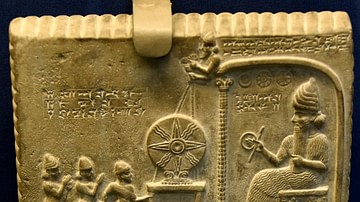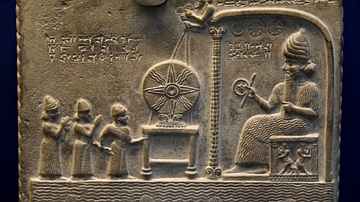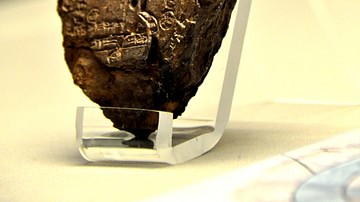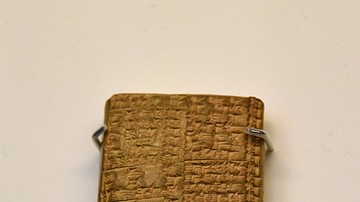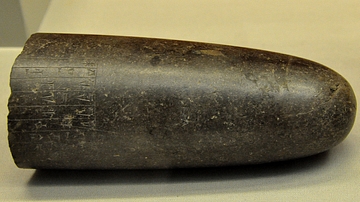Illustration
This stone tablet records the restoration of certain lands by the Babylonian king Nabu-apla-iddina to a priest. On the top of the stone are 13 symbols of the gods designed to protect the legal statement. Both the king, wearing the typical Babylonian royal hat, and the priest, who has a hand raised in salute, are shown on the obverse with labels identifying them. The cuneiform text dates the deed to the 20th year of Nabu-apla-iddina's reign and says it was sealed with the royal seal in Babylon in the presence of five high officials.
Babylonian, c. 870 BCE, from Sippar, Mesopotamia, Iraq. (The British Museum, London)
About the Author
Cite This Work
APA Style
Amin, O. S. M. (2014, February 06). Stone tablet of Nabu-apla-iddina. World History Encyclopedia. Retrieved from https://www.worldhistory.org/image/2294/stone-tablet-of-nabu-apla-iddina/
Chicago Style
Amin, Osama Shukir Muhammed. "Stone tablet of Nabu-apla-iddina." World History Encyclopedia. Last modified February 06, 2014. https://www.worldhistory.org/image/2294/stone-tablet-of-nabu-apla-iddina/.
MLA Style
Amin, Osama Shukir Muhammed. "Stone tablet of Nabu-apla-iddina." World History Encyclopedia. World History Encyclopedia, 06 Feb 2014, https://www.worldhistory.org/image/2294/stone-tablet-of-nabu-apla-iddina/. Web. 17 Apr 2025.



